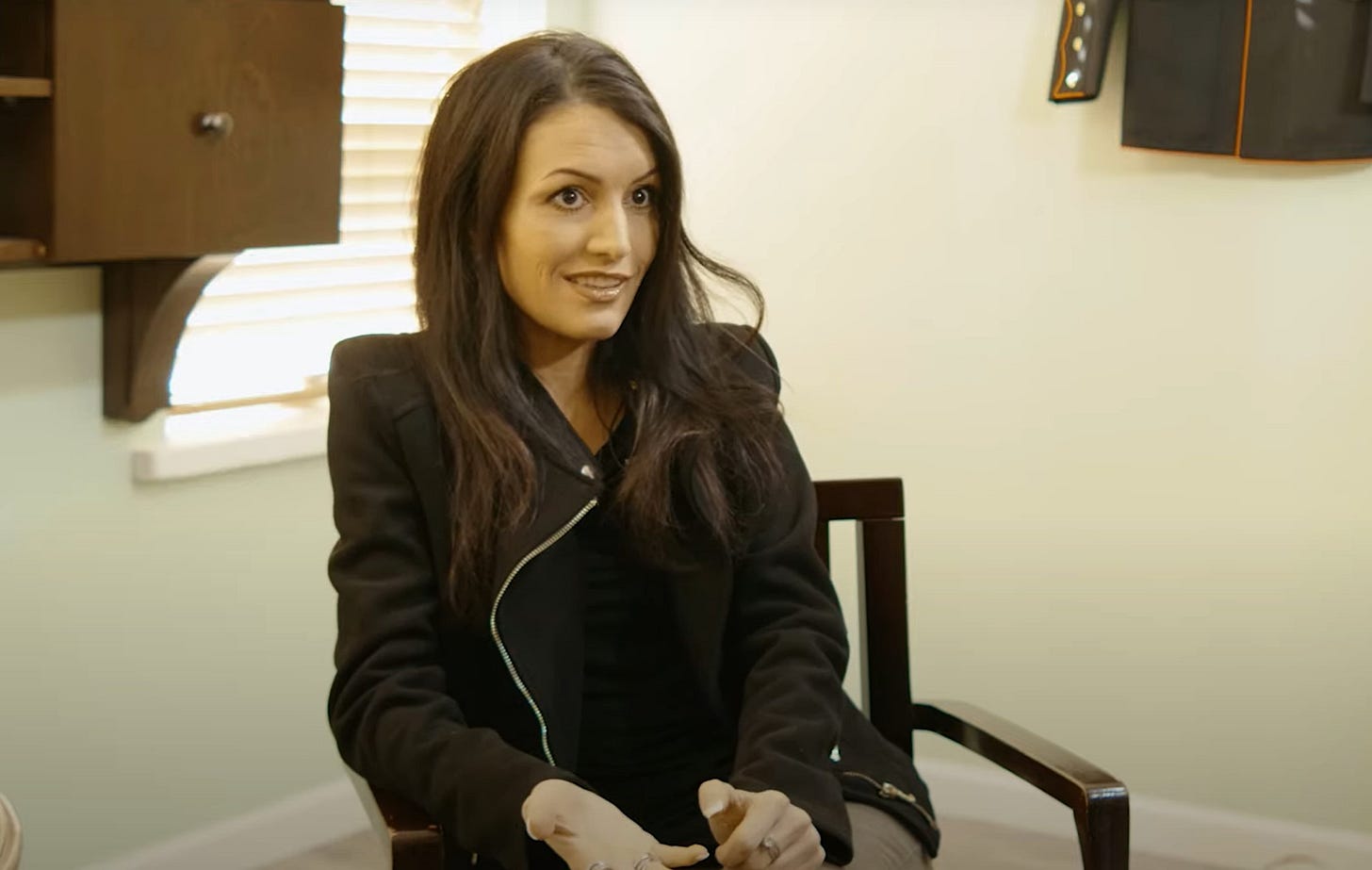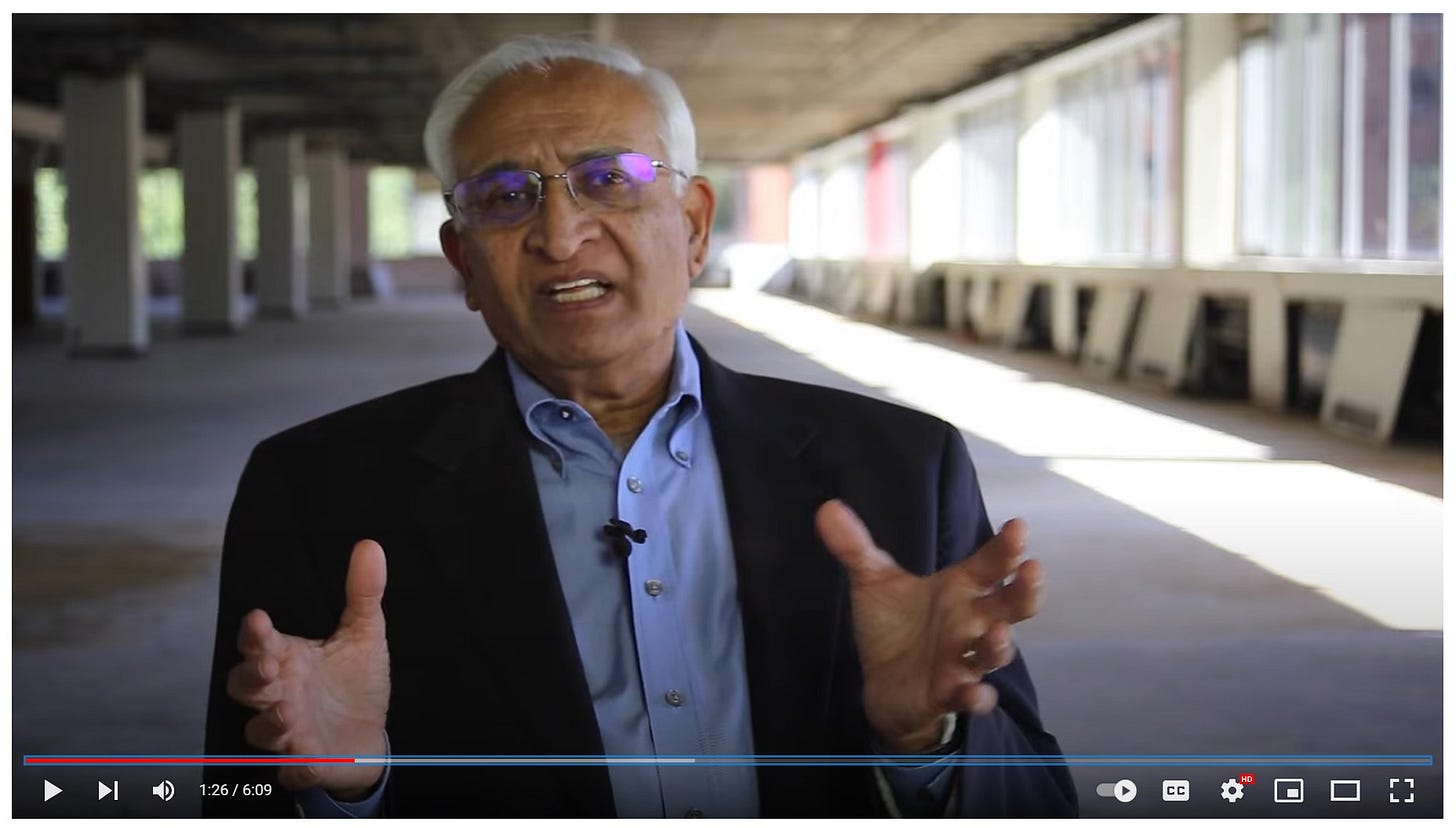Media Blackout
In May of 2018 Angela DeVasto relapsed…hard. As bad as the St. Louis social media manager’s addiction had been before, it was about to get worse. She spent $200 on what she thought was enough fentanyl for five days. It was gone by that night. Soon after, she ODed and had a three minute seizure, depriving her of oxygen so long she nearly had brain damage.
Angela had tried many forms of treatment. None worked. But finally she found success with a less-common medication, called Vivitrol. Given as a shot, it blocks the effects of opioids like fentanyl and heroin for about 30 days.
Though the desire to use continued ravaging Angela’s mind, now she only had to be strong one day per month — the day she got her shot. Knowing she literally could not get high turned off that voice in her head. “Without the shot, I’m certain I would not be alive today,” she said, adding that the medication allowed her to clean up her life and get back to work, for a financial planning company.
Vivitrol is a brand name for naltrexone, one of three FDA-approved medications to treat opioid addiction. But unlike the other two, methadone and buprenorphine, which are addicting opioids in themselves, naltrexone is completely non-addicting. By acting as a sort of vaccine, or an insurance policy, it has saved the lives of countless users.
Yet I didn’t know any of this. Despite spending five years reporting my book Fentanyl, Inc., I’d barely heard of naltrexone. That’s because it’s been almost completely shut out of the media discourse. Outlets like The New York Times, the Washington Post, and CNN regularly publish stories about the opioid crisis and medication assisted treatment, and while they nearly always discuss methadone and buprenorphine, they almost never mention naltrexone. Many treatment centers don’t offer it.
Why? That’s the question I’m answering in my new documentary Antagonist, for which I’ll soon begin production.
In my book I chronicled how big pharma set in motion the worst drug crisis in US history. Antagonist continues this work, using my investigative reporting skills to uncover how monied interests have sacrificed public health by suppressing naltrexone.
First gaining FDA approval in 1984 to prevent relapse in patients detoxed from opioids, in 1994 naltrexone also became the first drug approved in 50 years to treat alcoholism.
Many believe the medicine’s discovery should have been a “penicillin moment.” Chemically, it’s known as an “antagonist” for the way it blocks opioid receptors.
So why don’t we hear about naltrexone? On the one hand, I get it. Methadone and buprenorphine work great for many addicted users. I’ve seen the studies; the crisis would clearly be much worse without them. And they’re much easier to start on than naltrexone, which requires users to be completely detoxed from opioids, an agonizing process that can take a week or more. So it’s not for everyone.
But shouldn’t users at least have the option to take naltrexone? Shouldn’t patients have the option to live drug free?
A Conspiracy
According to Percy Menzies, there’s a conspiracy at play here.
Percy is the president of the Assisted Recovery Centers of America (ARCA), and I met him at a Fentanyl, Inc. event here in St. Louis a few years ago. It was a typical reading, and afterwards well-wishers lined up to have me sign their books.
Well, most wished me well, except Percy. I’d never met him before; he’s an older, debonair guy originally from India. He told me: “You have no idea what you’re talking about.”
He was referring to my statements on methadone and buprenorphine, which I’d called the “gold standard” for treating opioid addiction. This term is used in outlets like the Times and the Post, but Percy found it a depressing example of groupthink.
Instead, he believed naltrexone was an important alternative that was rejected, and could not get anyone to report on it.
“Naltrexone’s story is nothing short of a Greek tragedy,” Percy continued, growing increasingly animated.
Whatever. I pegged him as a gadfly with an agenda, the kind I’d often encountered in my years as a journalist. People behind him in line were growing impatient, so I took his card and dismissively said I’d be in touch.
A few months later a friend named Linda emailed me about her Crohn’s disease, which she had been fighting for years. She’d investigated nearly every possible remedy, but after a recent flare up she’d tried a hail mary — something called low dose naltrexone. To her shock, it worked. She’d finally found relief after all these years.
Did I know anything about this drug, naltrexone? she asked.
No, I admitted. But I realized this gadfly Percy might be onto something.
Prevention
I soon visited Percy at his ARCA clinic in downtown St. Louis. It mainly treats people in poverty, including homeless people and longtime addicted users. Percy, a pharmacist by training, wears nice suits, but in his day-to-day practice he gets his hands dirty, welcoming patients whom other clinics reject, offering naltrexone and buprenorphine. (Methadone is only available at specialized dispensaries.)
I interviewed many of these patients. Frequently they called Vivitrol a “miracle drug” that had saved their lives.
As much as I hated to admit it, Percy was correct that I’d failed to do my homework on naltrexone. But now, I told him, I was interested in reporting on it.
“Have you got yourself a bulletproof vest?” he asked. “It will result in a lot of push back.”
Was Percy right, that there was a conspiracy against this medicine? As a journalist, I love that “spidey sense” feeling, when things don’t add up.
And so I plunged into the research, and found an incredibly rich story.
The development of both naltrexone and methadone was funded by the administration of Richard Nixon, of all people. The two drugs were direct competitors for decades. Long before a fentanyl vaccine was developed, naltrexone has effectively acted as one.
At the center of the methadone vs. naltrexone debate was one question: Can opioid addiction be cured?
The proponents of methadone said no, the proponents of naltrexone said yes. At stake were literally billions of dollars, and the gloves came off. Ultimately, monied special interests — whom I will reveal in the documentary — KO’ed naltrexone, after slandering it with junk science and deceptive marketing.
It turns out that, for addicted users getting out of prison, already detoxed, naltrexone is particularly valuable. The same is true for highly-motivated individuals like pilots and doctors, who can return to work on naltrexone, but not on methadone or buprenorphine. Naltrexone is also well-regarded for treating alcoholism and shows promise fighting meth addiction, Crohn's disease, anorexia, self mutilation, long Covid, and even sex addiction.
Because of naltrexone’s unique interplay with endorphins, it has incredible medical potential. Its molecular structure is nearly identical to naloxone (Narcan), except instead of being used to revive overdose victims, it’s used to prevent overdoses before they happen.
“Today we’re focused only on treatment,” Percy said. “The prevention model has been completely overlooked.”
The Film
To find out if he’s right, I’m making my first full-length film Antagonist. This documentary will chronicle the history of naltrexone, how it got buried, and how it can help us now. The cast of characters include jazz musicians, beat poets, Nazis, and even a proto-Dr. Ruth sex therapist.
Here’s the trailer:
Don’t get me wrong. I haven’t drunk the kool-aid. I’m not arguing that antagonist treatment (like naltrexone) is superior to agonist treatment (like methadone), just that naltrexone should be part of the conversation. And I’m not getting paid by the naltrexone lobby. This film is completely independent, which is why I need your help.
Ultimately I want as many people as possible to beat opioid addictions. I want to reverse the ever-climbing death toll. I want to advocate for the best possible solutions.
And, if I’m being honest, I love a good “everything you think you know is wrong / it goes all the way to the top” conspiracy. Wherever it leads me, Antagonist will break the story wide open.





Naltrexone isn't the only substance with potential to block the effects of opioids for an extended length of time. There are some more recently developed "vaccine" compounds designed to target specific opioids, like oxycodone and fentanyl- you can do a keyword search and find out more about them. Researchers are also working on a "cocaine vaccine."
These drugs have just reached the stage of human trials in the past couple of years, and the trials are not complete yet. But the research would fit right in with your proposed documentary.
Brilliant, thank you for this hard work and hard won information. Keep it coming, B. Looking forward to the documentary. Will spread the fundraising word.
Have you reached out to Real Time with Bill Maher?